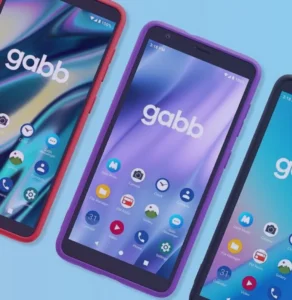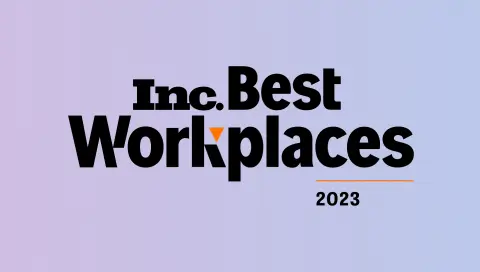Your Guide to Building a Marketing Mix
When you’re starting out in advertising, you’re always looking for the most effective channels to allocate your spend. With so many options available, from social media platforms like Facebook and Instagram to traditional out-of-home (OOH) advertising and direct deals with publishers, it can be challenging to determine when and how to start investing in digital advertising channels that drive real business growth.
One channel that can dramatically impact your success is programmatic advertising. But when should you take the leap and add programmatic to your marketing mix? When is the right time to transition from organic marketing efforts and manual ad buys into the world of programmatic automation?
We’re going to start from the beginning and lay out an ideal process from organic, to paid, to when to add programmatic. Let’s break it down step by step.
But first: What is Programmatic Advertising?
Programmatic advertising is the use of automated technology to buy and optimize digital ads in real-time. It leverages artificial intelligence (AI) and machine learning (ML) to target specific audiences across multiple platforms and channels. Rather than buying ads manually, programmatic allows you to reach users based on behaviors, demographics, interests, and location with greater precision.
Step 1: Paid Search and Paid Social—The First Paid Media Channels
Once you have a website, claim the handles on your social media profiles, and start posting organically or sending emails, you’ll likely start to get some traction. When you have the budget to add paid channels to your mix, the two most effective and immediate paid channels to test are paid search and paid social.
Paid Search
Paid search is a critical first step into the world of digital advertising. It’s typically best to start with Google Ads, as Google remains the dominant player in search. When someone searches for a product or service like yours, paid search ads ensure that your brand is front and center.
- Start with Google Search Ads: These ads are highly intent-driven. People are actively looking for a solution, and your ad can offer that solution directly. Google’s tools and targeting capabilities will allow you to reach the right people with specific keywords related to your business. As you start to build a customer base, consider adding display ads for retargeting. These ads help re-engage users who have already visited your website but didn’t complete a purchase. Google Display Ads can also help build awareness among a larger audience.
- Consider Google Shopping: If you’re in the retail or e-commerce space, Google Shopping ads can significantly boost your visibility, especially if your customers are ready to make a purchase.
Paid Social
Paid social is another critical area of your digital advertising strategy. The best place to start is with Meta (Facebook and Instagram). These platforms offer robust targeting options based on user interests, demographics, and behaviors.
- Meta Ads: Depending on your business, Facebook and Instagram ads can help drive traffic and conversions. Use high-quality visuals and clear call-to-actions to engage potential customers. (The author has experienced more than one effective Instagram ad that has driven her to make an impulse buy).
- Explore Other Social Platforms: Once you’ve mastered Meta’s platforms, it’s time to branch out. Platforms like TikTok, YouTube, Snapchat, and LinkedIn (especially for B2B marketing) offer opportunities to target niche audiences in unique ways. For younger demographics, TikTok and Snapchat may be more effective, while LinkedIn is ideal for professionals.
Step 2: Building Out Your Marketing Ecosystem
Before diving into the world of programmatic, you need to ensure that you have the foundational marketing and paid media elements in place. This includes your website, email marketing, and initial social media presence.
You don’t need to be an expert just yet, but these are the building blocks that will support your programmatic advertising, as you reach out across the open web for new clients or customers.
- Public Relations (PR): While PR isn’t a direct form of paid media, it plays an important role in building credibility and brand awareness. Whether it’s through media appearances, influencer collaborations, or giveaways, a solid PR strategy can supplement your advertising efforts. For example, appearing on popular shows or partnering with influencers can drive traffic to your site and generate buzz around your brand.
- Affiliate Marketing: Affiliate marketing can also be a valuable addition to your marketing strategy. You pay affiliates based on the sales they drive, so it’s a low-risk way to expand your reach. Influencers often act as affiliates, providing both social proof and affiliate-driven sales.
- SEO (Search Engine Optimization): Although not a paid channel, SEO plays a pivotal role in your digital strategy. Blog writing, optimizing meta descriptions, and building high-quality backlinks are crucial for improving organic search visibility. SEO efforts can also help reduce reliance on paid ads over time, driving traffic at a lower cost.
- Client CRM and Email Marketing: Having a well-organized CRM makes it easier to target the right customers with relevant offers and tailored messaging. From there, you can build out email marketing, allowing you to nurture existing relationships and drive repeat purchases.
- Social Media Community Management: Your organic social media efforts—whether through Facebook, Instagram, or even platforms like TikTok and YouTube—should be active. You need to have a community management strategy in place that’s engaging and not purely promotional. Genuine interaction with your audience helps build trust, which is essential when you move into paid efforts.
Step 3: The Datapoints for Adding Programmatic
Now that you’ve laid the groundwork, scaled your initial efforts, and started seeing results from paid search and paid social, it may be time to consider when to add programmatic advertising.
These are the two datapoints at which programmatic should be most effective for your business:
- Website and Traffic: Your website should be in top shape, optimized for conversions, and capable of handling increased traffic. To get started with programmatic effectively, you should aim for at least 50,000 unique monthly visitors. This indicates that you have a solid base of traffic coming from various sources, whether organic, from PR efforts, or through some initial paid campaigns.
- Sales and Revenue: Ideally, you should be generating a steady stream of sales from these visitors, aiming for around 800 orders a month. This gives you the proof of concept that your product or service resonates with your target audience, and enough data to build custom and targeted ads.
Who is Programmatic Most Effective For?
Once you have scaled your marketing efforts and ascertained that you’ve reached the ideal traffic and revenue goals, here are other parameters to consider to ensure that programmatic is the most effective channel to pursue:
- You Have Sufficient Data: With at least 50k unique monthly visitors and a consistent stream of orders (around 800 per month), you have the data needed to power programmatic targeting. This data includes customer behaviors, interests, and purchase patterns, which programmatic can leverage to deliver more personalized ads.
- You’re Looking for Greater Efficiency: Programmatic allows you to optimize your campaigns automatically, saving you time and effort while improving your return on investment (ROI). The technology ensures that your ad dollars are spent on the most effective placements and audiences.
- You Want to Scale Across Multiple Channels: Programmatic is perfect for marketers looking to scale their campaigns across multiple channels simultaneously. Whether it’s display, video, or even connected TV, programmatic can unify your campaigns and optimize them in real-time.
- You Have a Solid Budget to Test and Scale: Programmatic advertising often requires a larger initial investment. It’s essential to have the budget to test, learn, and scale. As you grow, you can refine your targeting and scale your ad spend based on the results.
Conclusion
To successfully integrate programmatic advertising into your marketing ecosystem, you need a solid foundation built on organic traffic, paid search, and social media efforts. Once you’ve generated consistent traffic, demonstrated that your product or service has market fit, and gathered enough data, you’ll be in a great position to scale with programmatic.
The right time to add programmatic is when you’re ready to automate, scale, and optimize across multiple platforms for better efficiency and targeting. If you’ve already mastered the basics and are seeing positive returns from paid channels, then adding programmatic advertising to your marketing mix will be the next natural step in your advertising journey.
As always, the key to success in advertising is continuous testing, learning, and iteration. By leveraging both the foundational elements of your marketing strategy and the power of programmatic advertising, you can unlock new growth opportunities and maximize your advertising spend.
Read this article and realized that you’re ready to start programmatic advertising? Version2 is ready to help!
We build out custom service plans based on your goals and level of engagement needed. Whether you’re just starting out or looking for a partner, Version2 can provide the tech, tools, and expertise to help you explore the universe of programmatic.
Whether you’re a brand or agency, drop us a line and let’s chat about how we can help.









